The Merchant House № 66 Engelsgrube over time
“Only those who know the past can understand the present and create the future”
August Bebel, 1840 – 1913
12th century
1143 foundation of the City of Luebeck. Since 1226 free imperial city
1157 a German merchant’s association mentioned in a London document for the first time
13th century
1259 street name “Engelsche Grove” in Luebeck for the quarter of “Englandfahrer” (ship owners and their families). Since 1369 plate Anglica
1263 foundation of the City of Gdansk according to Luebeck law
14th century
1310 the warehouse № 66 Engelsgrube first mentioned in the city archives of Luebeck
1350 Brotherhoods of St George are developing in many parts of Europe
1356 First “meeting ride” (Hansetag) in Luebeck
1361 for the first time the City of Gdansk attends a Hansetag
15th century
1481 St Reinholds Bank Confraternity established at Artus Court Gdansk
1482 St Christophorus Bank Confraternity established at Artus Court Gdansk
1483 Heilige Drei Könige Bank Confraternity established at Artus Court Gdansk
1487 Marienbürger Bank Confraternity established at Artus Court Gdansk
1492 Christopher Columbus makes landfall in the Americas
16th century
1532 Georg Giese Hanseatic merchant from Gdansk at the Steelyard painted in London by Hans Holbein the Younger
17th century
1630 Engelsgrube 66 wird als „Rotbruhuus“ (Brauhaus für Braunbier) erwähnt
1669 Last Hanseatic Day
1678 First German wine trading house established by Peter Hinrich Tesdorpf in Luebeck
18th century
1807 Gdansk becomes a “free City” according to the Treaties of Tilsit
20th century
1919 Gdansk becomes a free city again based on the Treaty of Versailles
1945 flight and expulsion of the German inhabitants from Gdansk
1980 acquisition and reconstruction of the property № 66 Engelsgrube in Luebeck by an association of about 200 former citizens of Gdansk (Danziger Foerderkreis e.V.)
1983 grand opening of the “HAUS HANSESTADT DANZIG” with museum, offices and two rental apartments
1987 the house becomes part of the UNESCO „World Heritage List“
Today
2011 establishment of the non-profit HAUS HANSESTADT DANZIG foundation
2013 acquisition of the former long lease property by the new foundation
2016 the Mayor of the City of Gdansk, Pawel Adamowicz (†), is visiting Luebeck and the HAUS HANSESTADT DANZIG
2018 Friendship and cooperation agreement with the Confraternities of the Artus Court of Gdansk in Luebeck
2022 extensive conversion and renovation
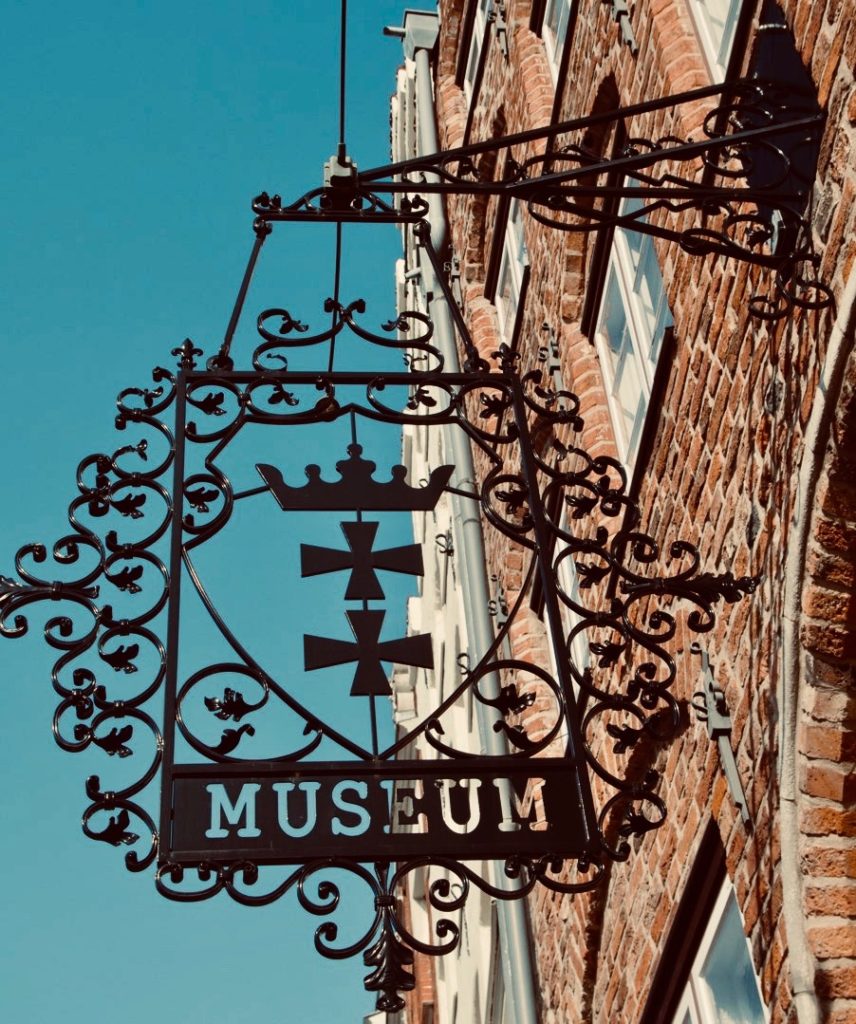
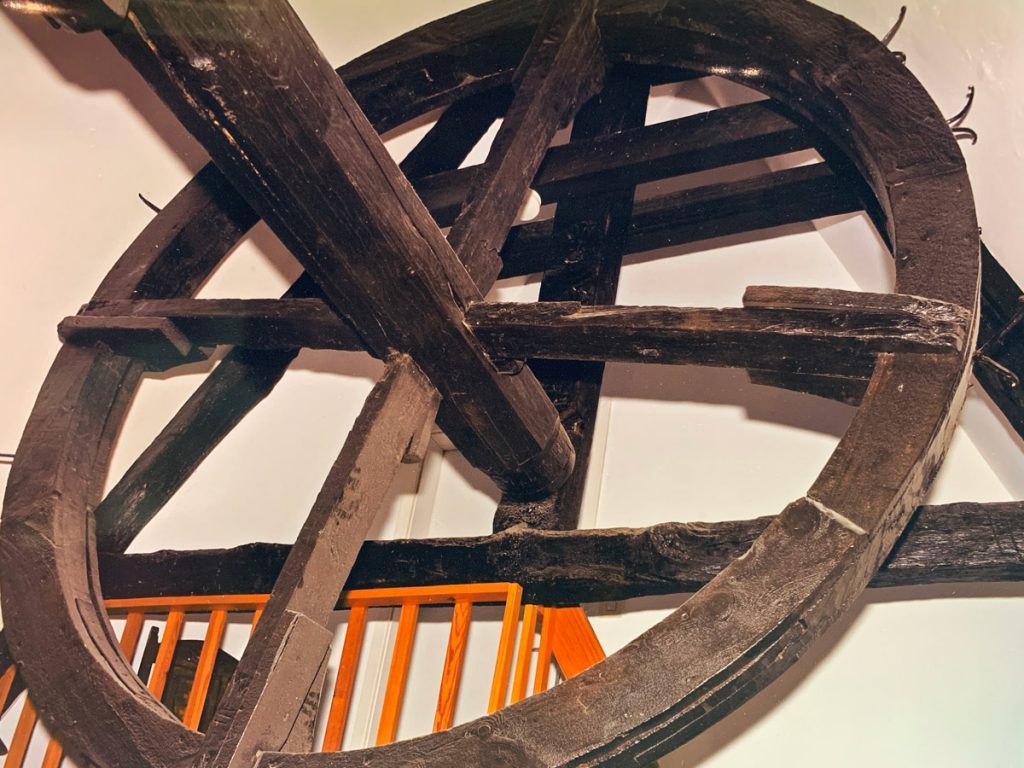

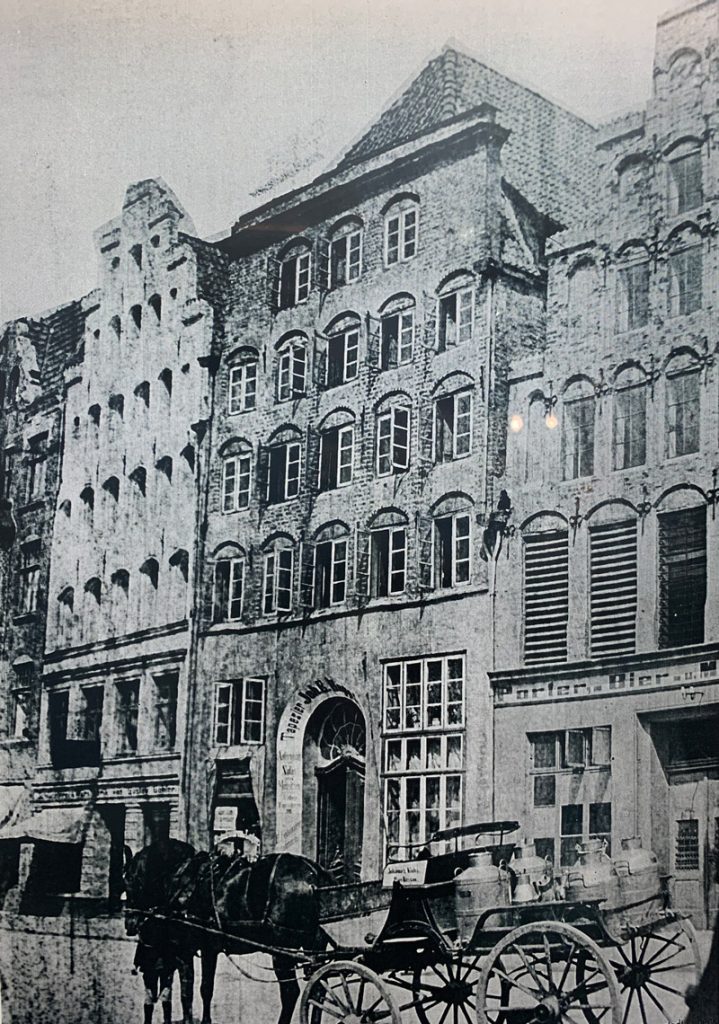
Press

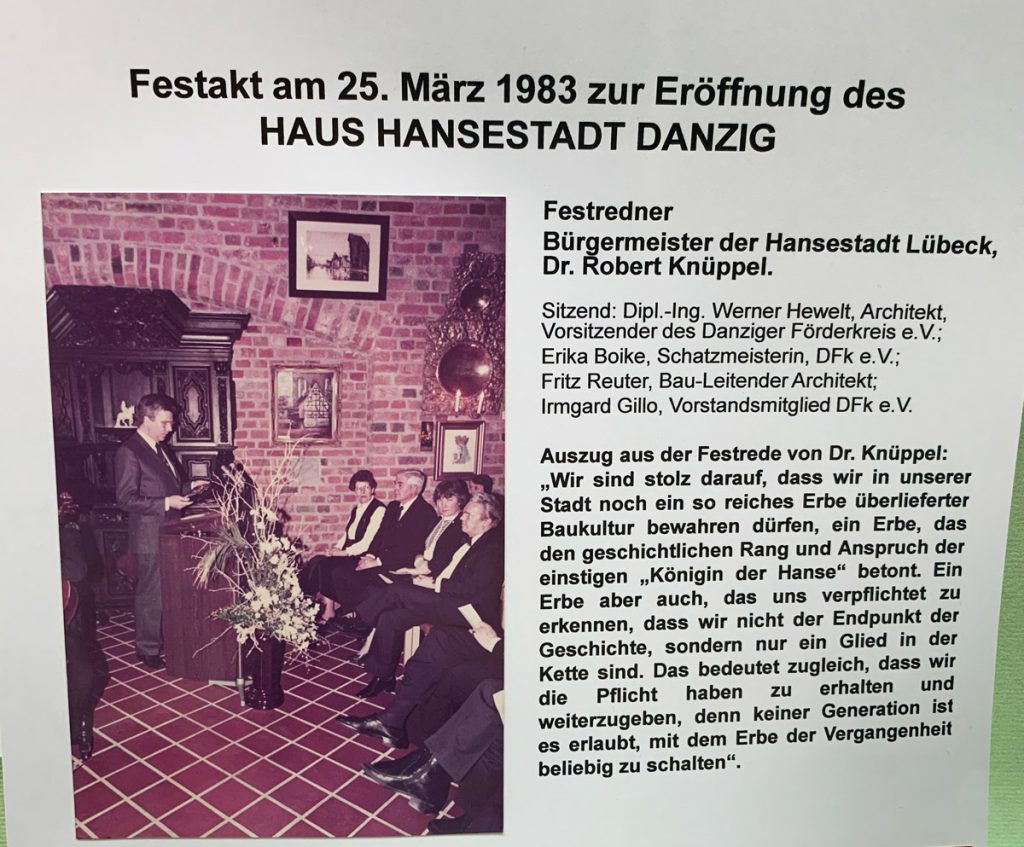
A look into the past
The Foundation
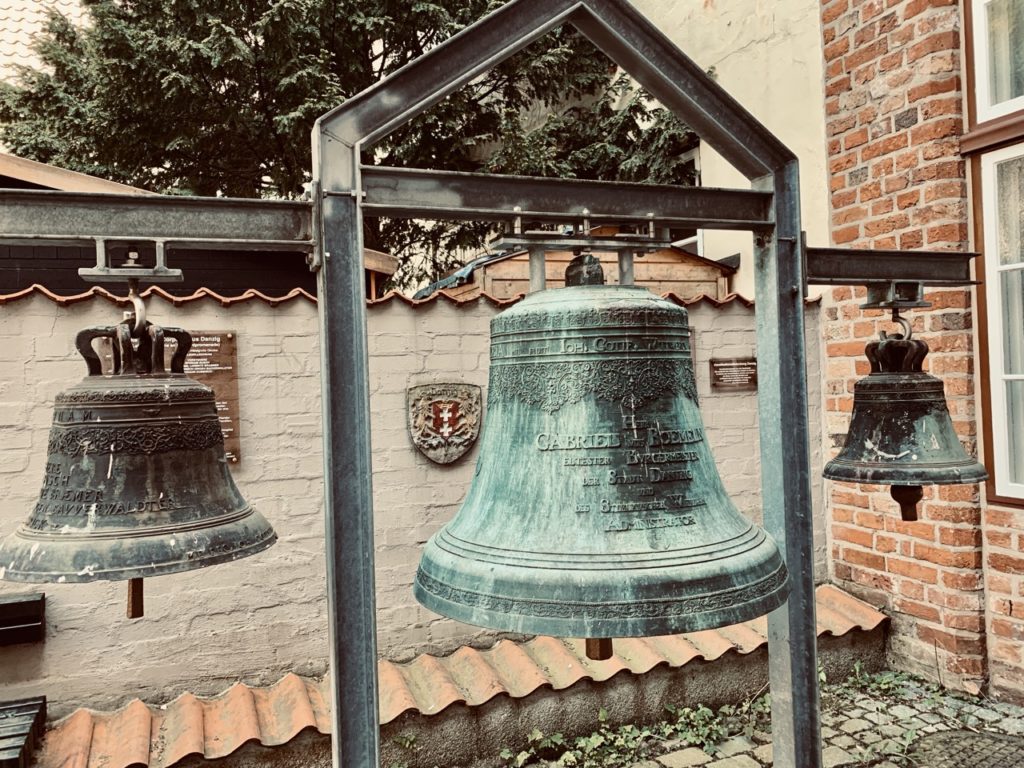
The initiators around the architect Werner Hewelt chose the dilapidated house Engelsgrube 66, which was acquired by the Hanseatic City of Lübeck as a leasehold in 1980.
After three years of construction and an extraordinary commitment on the part of the association’s members, the house was officially opened on 25 March 1983 with the HAUS HANSESTADT DANZIG museum and several offices and flats.
In order to secure the future of the institution in the long term, the members unanimously decided at the ordinary general meeting on 7 May 2011 to dissolve the association on 31 October 2011 and, after amending the statutes accordingly, to transfer the assets to the HAUS HANSESTADT DANZIG Foundation with legal capacity, which was unanimously approved on the same day.
In 2013, the foundation will acquire the previous hereditary building plot from the Hanseatic City of Lübeck.
At the end of the 1970s, former citizens of the Hanseatic city of Gdansk decided to create a cultural and documentation centre for their old hometown in the Federal Republic of Germany and founded the Danziger Förderkreis e.V., based in Lübeck, for this purpose on 20 January 1979.

